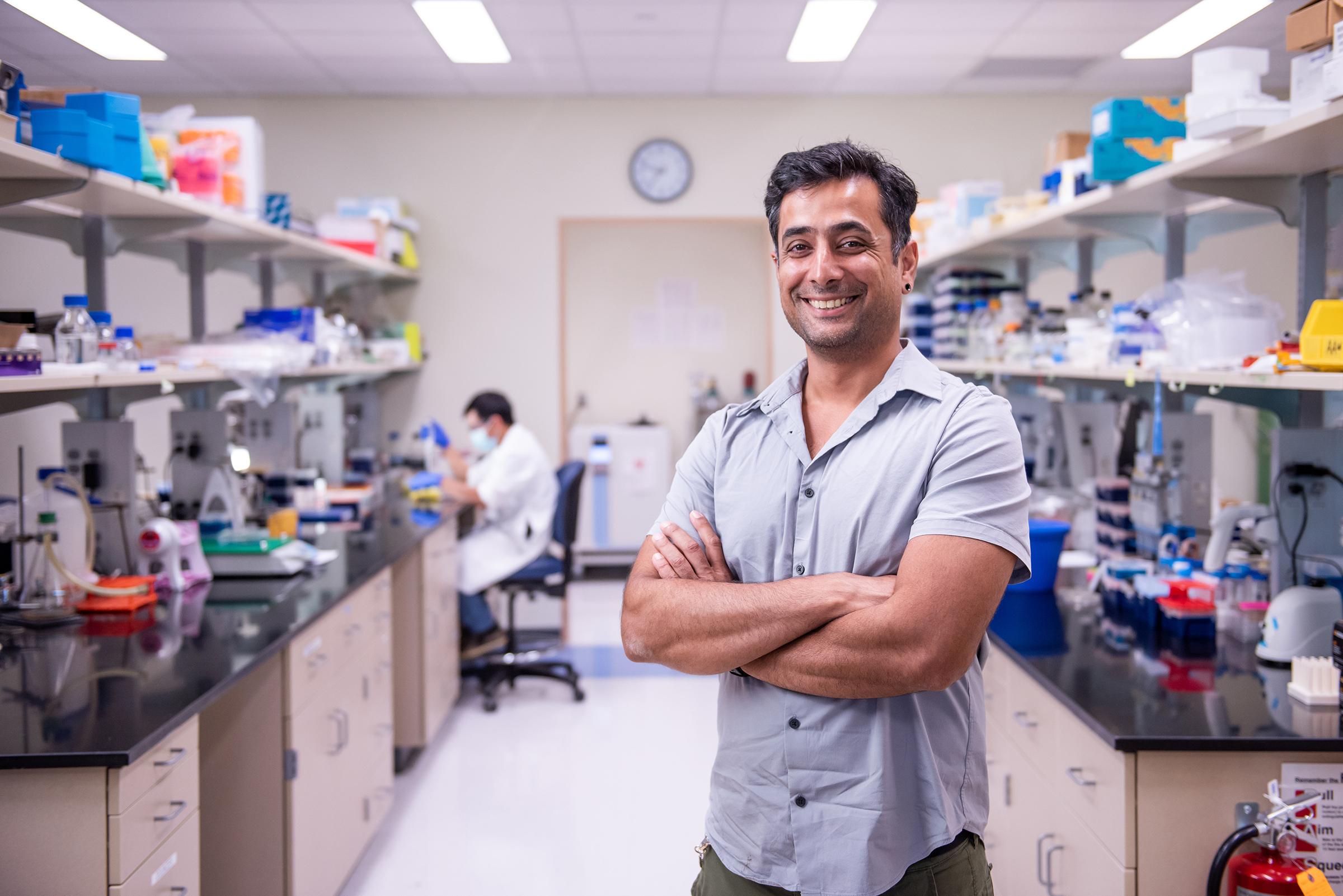
Amer Alam, PhD
Associate Professor
The Alam lab uses a combination of biochemical and structural (Cryo-EM and X-ray crystallography) techniques to primarily study macromolecules and macromolecular complexes involved in membrane transport, homeostasis, and biogenesis, with a particular focus on pinpointing lipid/protein interactions in context of membrane protein function. Maintenance of membrane bilayer integrity and tight control over material transfer across cellular and organellar membranes is central to proper physiological functioning. Dysfunction of these systems lies at the heart of several devastating, often fatal pathologies ranging from rare inherited diseases such as Zellweger’s syndrome and adrenoleukodystrophy (both stemming from peroxisomal dysfunction) to a range of neurodegenerative disorders, diabetes, and cancer.
The Hormel Institute ranks among a handful of elite institutions housing a Titan Krios microscope combined with a direct electron detector, a setup designed to obtain near-atomic resolution (routinely achieving better than 0.5 nanometer resolution). This allows for accurate visualization of the molecular details underlying the functioning of macromolecules and has revolutionized structural biology and allowed for targeting of complex biological problems previously considered offlimits to high resolution visualization. Such insight is invaluable in obtaining molecular details of membrane protein interactions with drugs, transport substrates, and inhibitors and can aid in the design of novel therapeutics targeting diseases stemming from membrane protein dysfunction.
Over the last year since its inception, our lab has determined the cryo-EM structures of several human membrane transporters at near atomic resolutions. Along with their biochemical characterization, these new structures will be part of several upcoming publications we are in the process of preparing. We have added a new postdoc to our roster, Dr. Le Thi My Le, who also successfully applied for and is partially funded by the 2020 Eagles Postdoctoral fellowship award. We have co-authored two recent publications with a fellow Hormel Institute collaborator, Dr. Rick Brown (Gao et al, Anal Chem, 2020), as well with Dr. Alam’s postdoctoral lab on the structure of human ABCB4 / MDR3 (Olsen et al, NSMB 2020). Finally, Dr. Alam was awarded a research grant from the United Leukodystrophy Foundation to support his work on peroxisomal biogenesis and dysfunction.
The Alam lab has made significant progress in deciphering the molecular details that govern lipid metabolism and homeostasis by studying the detailed 3D structures of an important class of membrane proteins called ABC transporters. Specifically, the Alam lab has determined the high-resolution structures of ABC transporters involved in the movement of cholesterol and phospholipids across cellular membranes, revealing hitherto unseen details about how this essential step in formation of high density lipoprotein (HDL) particles form and how their dysfunction leads to a range maladies ranging from various brain disorders including Alzheimer’s disease, to various neurodegenerative diseases, as well as cancer.
The Alam lab uses a combination of biochemistry, cell biology, and state of the art Cryo-EM tools to study this group of human proteins that has for decades proven extremely difficult to study.
Primary Research Areas:
- Membrane transport processes
- Peroxisome biogenesis and homeostasis
- Lipid/protein interactions
- Lipid and fatty acid metabolism
Research Specialties:
- Membrane protein biochemistry
- Cryo electron microscopy
- X-ray crystallography
